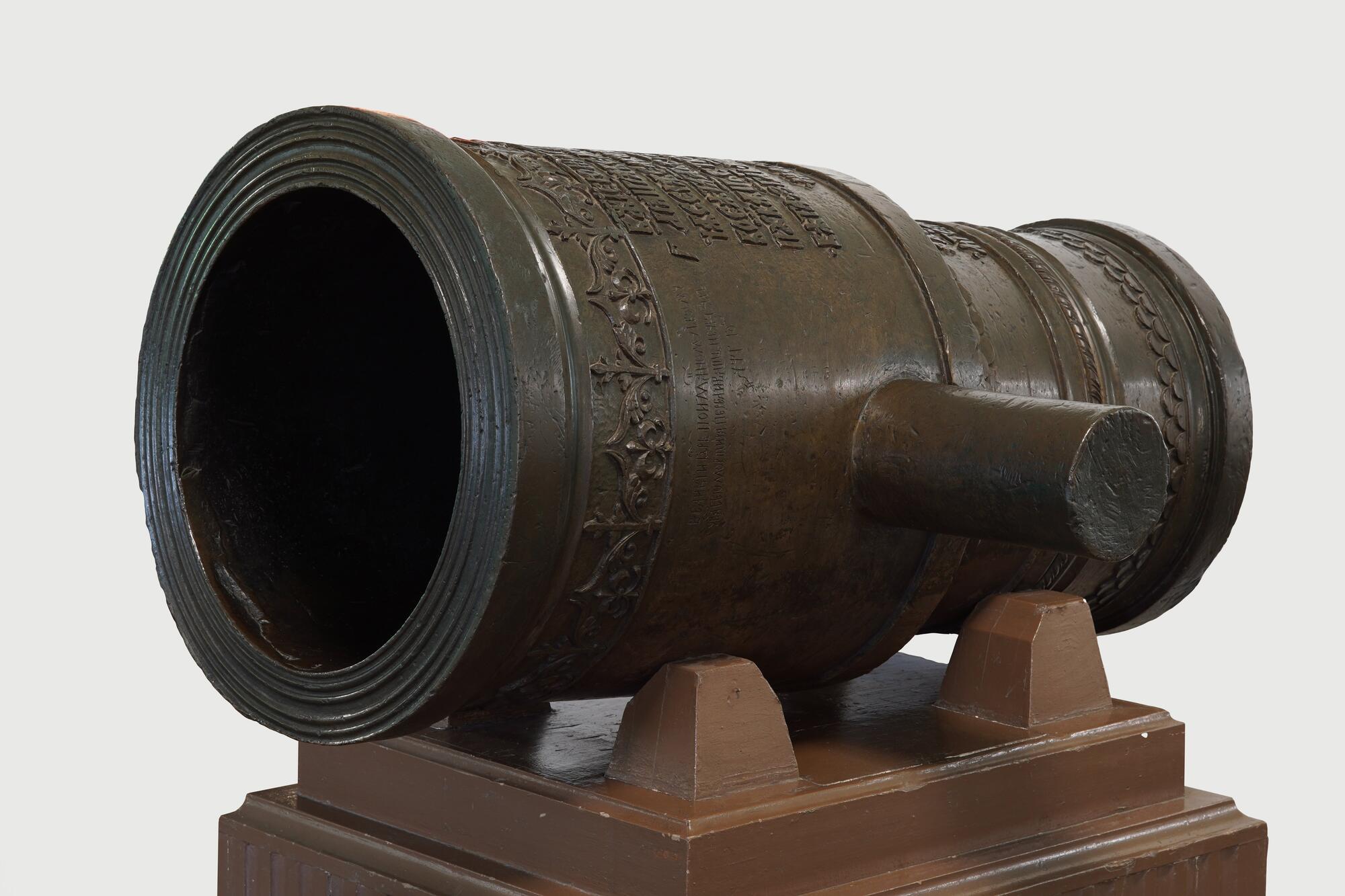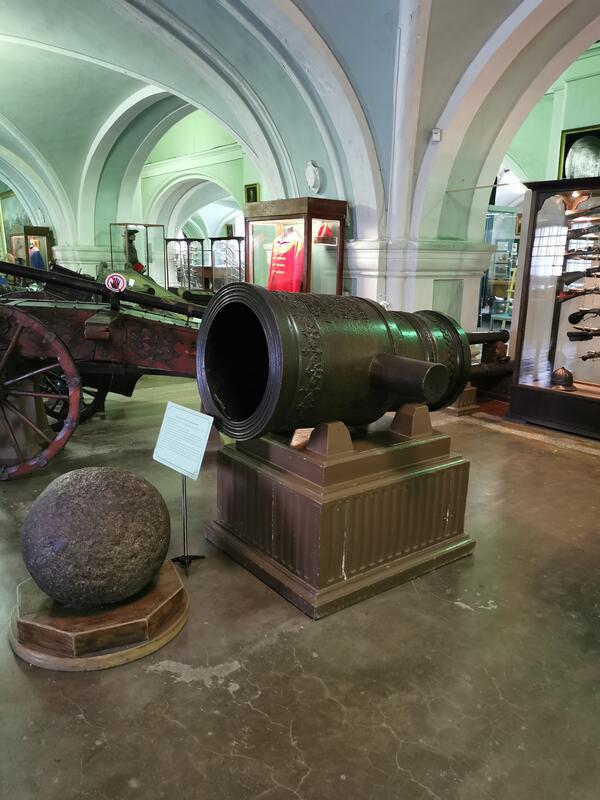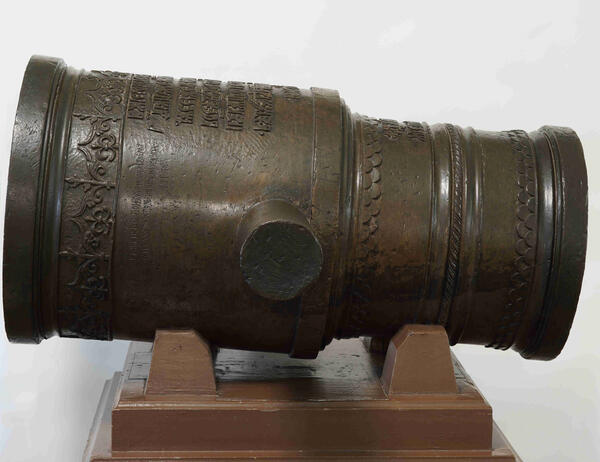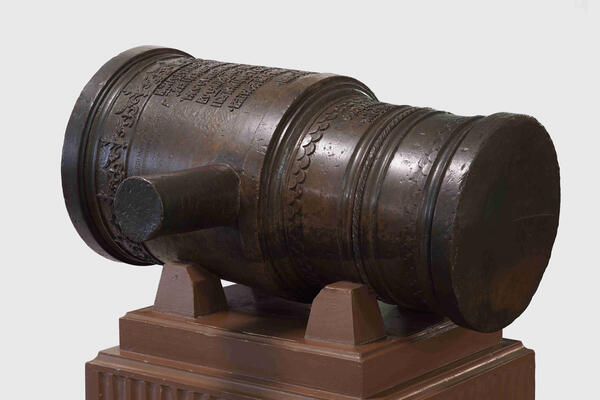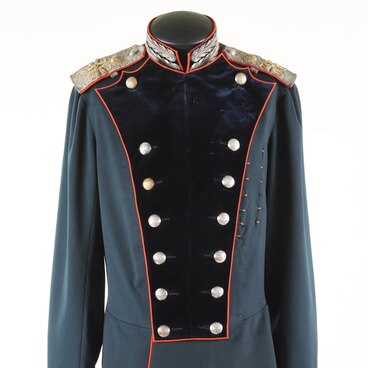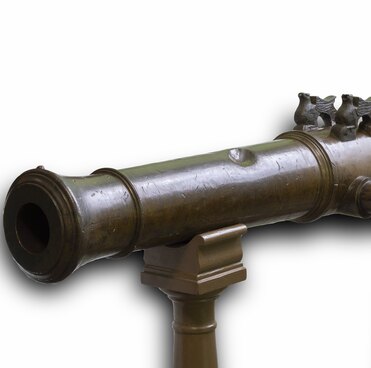Mortars — short-barreled guns firing at high elevation angles that can vary — have been used in artillery since the 15th century. They were intended for shooting at targets located in trenches and shelters.
Under Peter I, artillery pieces were divided into classes: short-barreled mortars, medium-barreled howitzers and long-barreled guns; that is when the term “mortar” appeared.
This word is derived from the Dutch mortier, from the Latin mortarium — “bowl”. The gun received this name for its original shape: the powder charge and the projectile were laid at the bottom of the “bowl”. Due to the high cost of metal, the projectiles were usually made of stone.
The presented 30-pood mortar was made by master Andrey Chokhov with the assistance of his student and caster Pronya Fedorov, as evidenced by two cast inscriptions — on the barrel and on the chamber.
The weapon was nicknamed after the ruling tsar the “Mortar of False Dmitry (I)” or “Mortar of the Impostor”.
Andrey Chokhov (c. 1545–1629) was the most famous of the students of the prominent 16th–century caster Kashpir Ganusov, bell and cannon maker. Since 1590, he was one of the leading casters of the Moscow Cannon Court. Over more than forty years, he alone cast more than twenty pieces of heavy guns and educated a whole generation of students: Alexey Nikiforov, Pronya Fedorov, Grigory Naumov, Kondraty Mikhailov and others.
In the second half of the 17th century, the presented mortar was in service in Kiev, and then transferred to the Moscow arsenal. In 1703, when inspecting the arsenal, Peter I personally ordered it to be preserved. This is evidenced by the stamped inscription on the left side of the barrel that reads,
Under Peter I, artillery pieces were divided into classes: short-barreled mortars, medium-barreled howitzers and long-barreled guns; that is when the term “mortar” appeared.
This word is derived from the Dutch mortier, from the Latin mortarium — “bowl”. The gun received this name for its original shape: the powder charge and the projectile were laid at the bottom of the “bowl”. Due to the high cost of metal, the projectiles were usually made of stone.
The presented 30-pood mortar was made by master Andrey Chokhov with the assistance of his student and caster Pronya Fedorov, as evidenced by two cast inscriptions — on the barrel and on the chamber.
The weapon was nicknamed after the ruling tsar the “Mortar of False Dmitry (I)” or “Mortar of the Impostor”.
Andrey Chokhov (c. 1545–1629) was the most famous of the students of the prominent 16th–century caster Kashpir Ganusov, bell and cannon maker. Since 1590, he was one of the leading casters of the Moscow Cannon Court. Over more than forty years, he alone cast more than twenty pieces of heavy guns and educated a whole generation of students: Alexey Nikiforov, Pronya Fedorov, Grigory Naumov, Kondraty Mikhailov and others.
In the second half of the 17th century, the presented mortar was in service in Kiev, and then transferred to the Moscow arsenal. In 1703, when inspecting the arsenal, Peter I personally ordered it to be preserved. This is evidenced by the stamped inscription on the left side of the barrel that reads,
